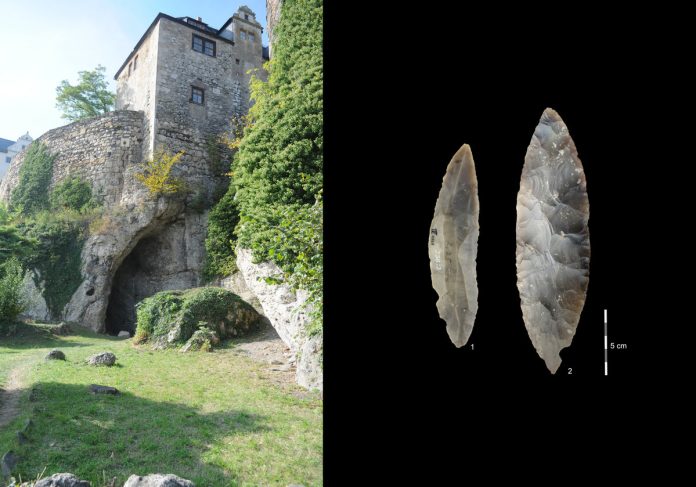The Ilsenhöhle cave, located about 240 kilometres southwest of the German capital Berlin, is now known for a unique discovery that completely turns our understanding of human history and when Homo sapiens first appeared in Central Europe upside down – Geographical reported.
Excavations of the cave by researchers from the Max Planck Institute for Evolutionary Anthropology, the results of which have just been published in the journal Nature, have uncovered something completely unexpected. The fossils and artefacts, dating back even further, to 47,500 years ago, belong not to Neanderthals but to Homo sapiens.
This suggests that Homo sapiens reached Central Europe much earlier than previously thought, and that they lived here alongside Neanderthals.
“We were fortunate to find a 1.7-metre thick rock the previous excavators did not get past,” said Marcel Weiss, an archaeologist based at FAU Erlangen who was a part of the excavating team. “After removing that rock by hand, we finally uncovered the LRJ layers and even found human fossils. This came as a huge surprise, as no human fossils were known from the LRJ before, and it was a reward for the hard work at the site.”
It was thought that never before had signs of Homo sapiens been found in the LRJ rocks of this part of Europe, but now “Stone artefacts that were thought to be produced by Neanderthals were, in fact, part of the early Homo sapiens tool kit,” according to Jean-Jacques Hublin, a professor in palaeoanthropology at Collège de France.
This fundamentally changes our previous knowledge about this time period: Homo sapiens reached northwestern Europe long before the Neanderthal disappearance in southwestern Europe.
The cave contained not only human and Neanderthal bones, but also many animal bones, including those of cave bears and hyenas, which probably also used the cave for shelter when humans were not present. There were also bones of animals that were probably hunted by the peoples who lived in the cave. These animals included reindeer, horses, and even a woolly rhinoceros.
In the 1930s, archaeologists excavated the cave and found artefacts and bones of Neanderthal man dating back to about 43,000 years ago.
